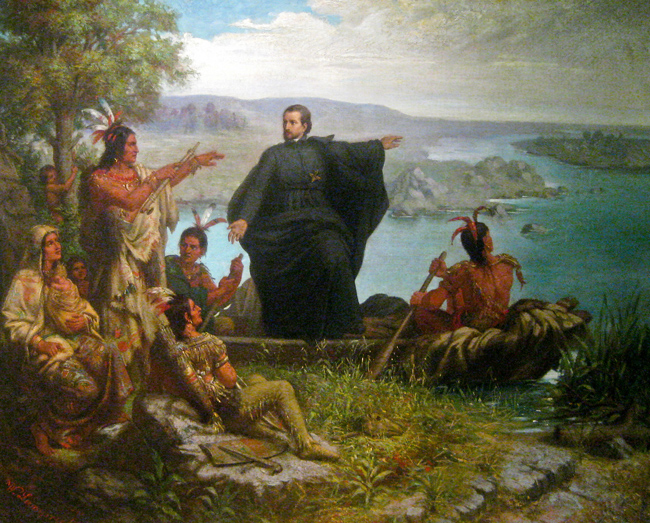The Eternal Search for the Northwest Passage
Many governors of settlements and kings of nations were hoping to be the first to find the Northwest Passage - a shortcut through the New World to the Indies (southeast Asia).The discovery of a Northwest Passage would result in great wealth for the founding nation because it would be able to directly import goods from the Asian markets while controlling the passage itself.
Entering the Mississippi River
In 1673, the governor of New France, sent Jacques Marquette, a Catholic missionary, and Louis Joliet, a fur trader, along with seven other explorers on a mission to find the Northwest Passage. The team began their trip in Quebec and traveled through Michigan's upper peninsula to the northern tip of Lake Michigan. On canoes, they crossed the massive lake and landed at Green Bay, Wisconsin, at the mouth of the Fox River. They met local Indians who described various rivers they would encounter. After portaging their canoes to the Wisconsin River, they entered the great Mississippi River on June 17, 1673.
 |
Pere Marquette and the Indians (1869) - Wilhelm Lamprecht |
But it Flows South!
Marquette and Joliet soon realized that the Mississippi couldn't possibly be the Northwest Passage they were hoping for because it flowed south. Nevertheless, the journey continued. Marquette and Joliet described some of the wildlife they encountered. They described the catfish as a monster with the head of a tiger, the nose of a wildcat, and with whiskers. They undoubtedly encountered herds of buffalo which they described as cattle. The pair rowed south past the junction of the Mississippi River and the Ohio River, and turned around at the junction of the Mississippi River and Arkansas River. They guessed that the Mississippi River flowed into the Gulf of Mexico and were wary of being captured by Spaniards who controlled the area.
The explorations of Marquette and Joliet paved the way for further French explorations of the region, including the expedition of Robert Sieur de la Salle, who claimed the river and the land it drained for France.